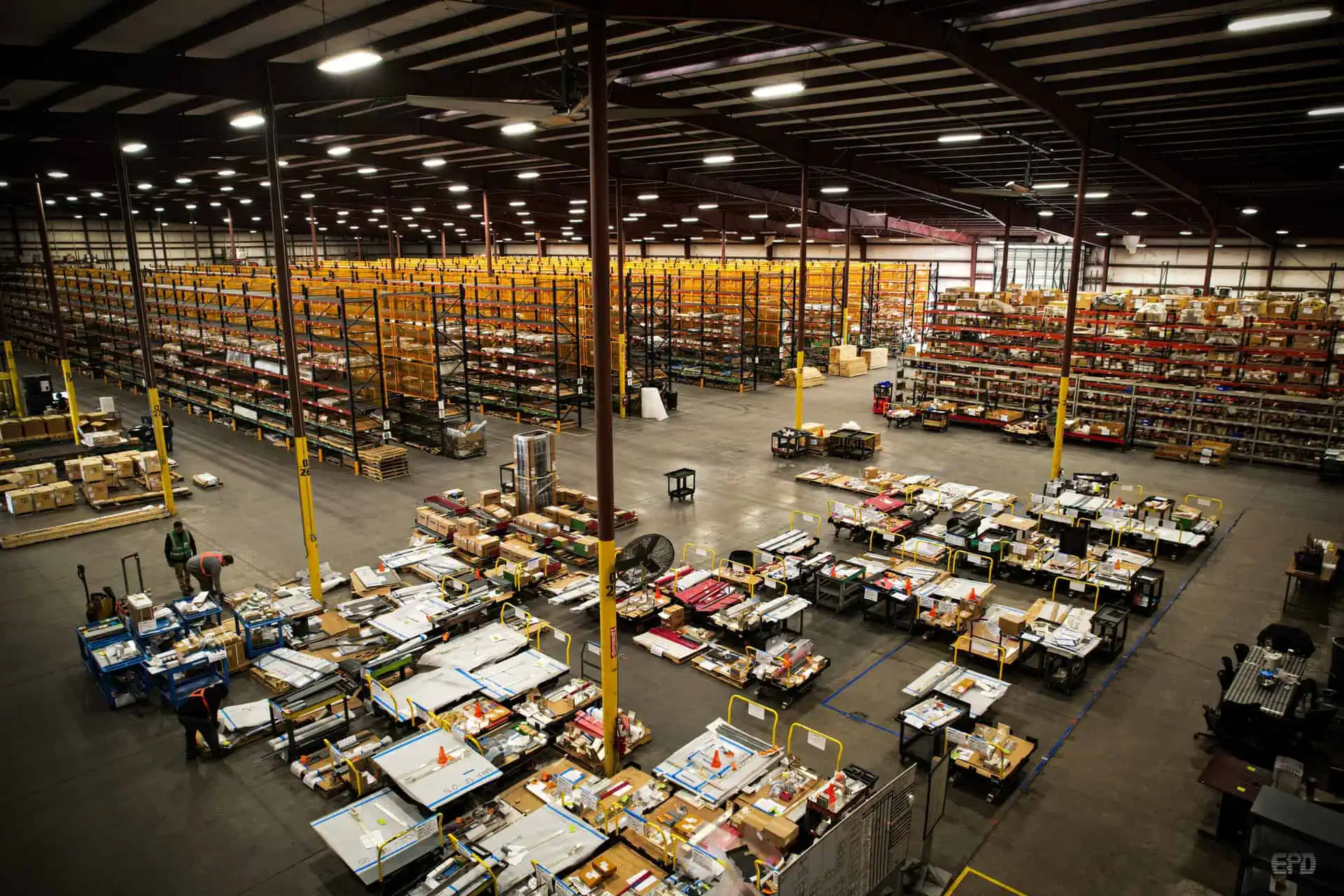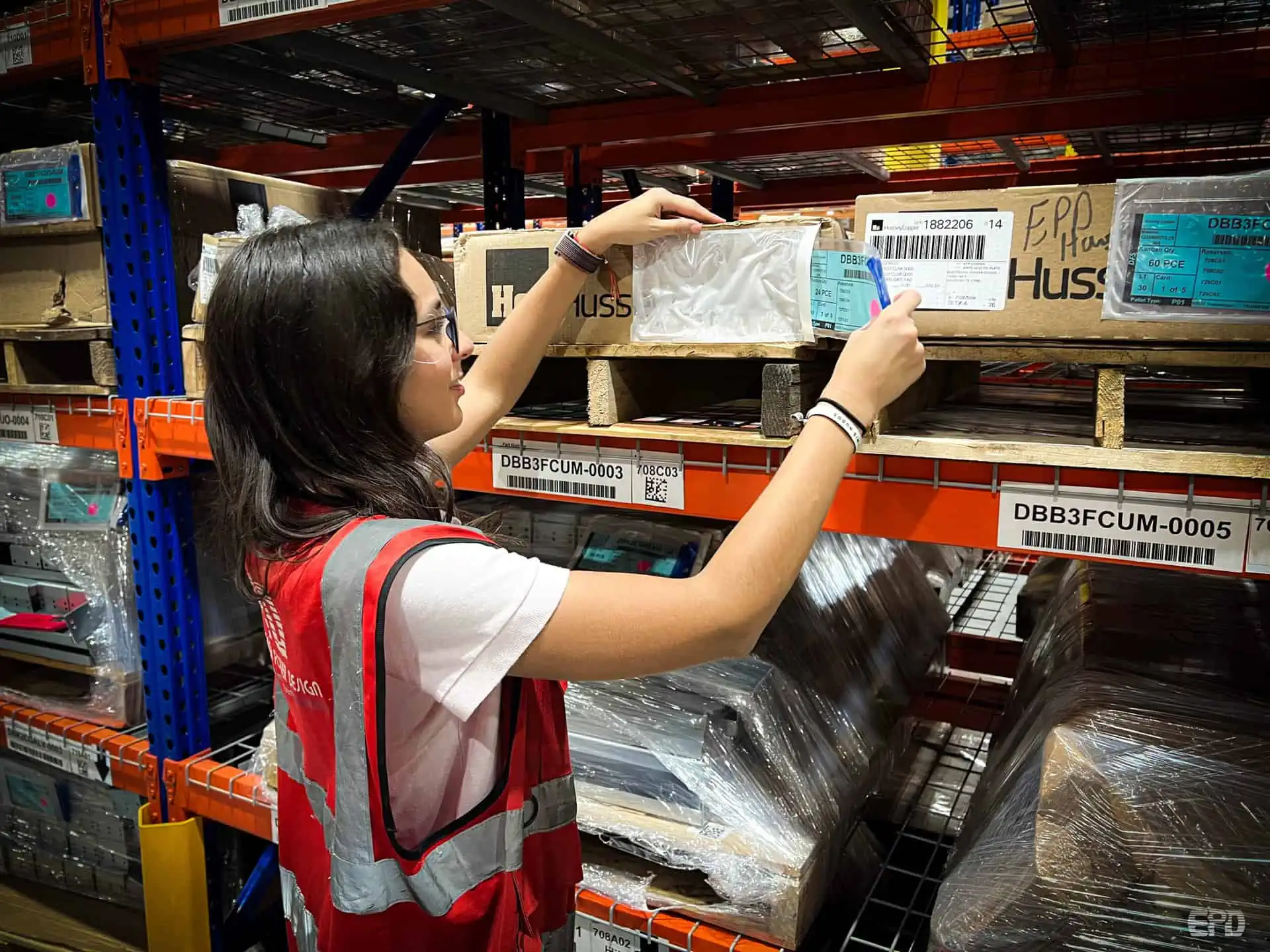Low Voltage Supply Chain Challenges: Case Study
Navigating Low Voltage Switchboard Supply Chain Challenges: Strategies for Resilience and Innovation
The global manufacturing sector currently faces a confluence of supply chain challenges and disruptions to the flow of materials and products.
For low-voltage switchboard manufacturers, these hurdles can be particularly daunting, requiring a strategic blend of resilience and innovation to maintain steady production and a competitive edge.
To succeed, switchboard manufacturers must navigate raw material scarcities, intricate supply networks, and stringent regulatory requirements.
Among low-voltage switchboard manufacturers, Electronic Power Design (EPD) stands out as an example of innovative adaptability, employing robust strategies and setting industry benchmarks for efficiency and quality.
This case study explores the multifaceted supply chain challenges in switchboard manufacturing and highlights the pragmatic approaches EPD has adopted to navigate and surmount these obstacles.

Understanding Switchboard Supply Chain
The global switchboard supply chain consists of a complex network of material suppliers, manufacturers, and assemblers.
Components in the Supply Chain
- Primary raw materials include copper, aluminum, and insulating plastics. Countries in the Southeast Asian and Latin American regions, particularly Indonesia, Chile, and Mexico, produce the bulk of switchboard materials.
- The main electrical components of switchboards are circuit breakers, busbars, and control devices.
- Most switchboards also have hardware and enclosures for physical assembly.
Key Players and Their Roles
- Material suppliers provide raw materials for components.
- Component manufacturers produce the electrical parts used in switchboards.
- Logistics companies manage the transportation of materials and components.
- Assembly plants like EPD create final switchboard products.
Common Challenges Faced
Around the globe, several challenges complicate the switchboard supply chain.
1. Raw Material Shortages
Switchboard manufacturers rely on a steady supply of raw materials such as copper, aluminum, and plastics. These materials are subject to heightened market volatility and geopolitical factors that can lead to unpredictable shortages.
For instance, in 2022, manufacturers faced growing supply constraints despite the industry's substantial sales figures. In 2023, prices for copper and aluminum reached new highs by the end of Q2 before falling to 22% and 41%, respectively.
These figures indicate the resilience and resourcefulness required to maintain production in the face of material scarcity and price swings.
2. Complex Supply Networks
As the industry continues to expand with an annual growth rate of 10.5%, the complexity of supply chains also increases.
Manufacturers must coordinate with a multitude of suppliers, often globally dispersed, to procure necessary components.
The intricate nature of these networks makes them susceptible to disruptions, such as trade disputes or transportation delays, requiring manufacturers to have adaptable contingency plans in place.
3. Quality Control and Compliance
Ensuring consistent quality and compliance with industry regulations such as those set by the International Electrotechnical Commission (IEC) and Underwriters Laboratories (UL) is a significant challenge.
Manufacturers must rigorously evaluate electrical performance and safety, adhere to precise assembly procedures, and conduct continual inspections to meet high standards.
As most regulatory organizations update their manufacturing standards every 3-5 years, switchboard manufacturers must stay committed to specific operational methods.
4. Technological Evolution
The swift pace of technological advancement demands that manufacturers remain agile. Integrating modern technologies into existing systems requires investment and can disrupt production lines.
Manufacturers must balance the need for innovation with the risks associated with adopting modern technologies.
5. Skilled Labor Shortage
Skilled labor is critical in the manufacturing of complex electrical equipment. However, the labor market is often unpredictable, with shortages of qualified workers and rising labor costs posing challenges.
Across manufacturing sectors, the labor shortage precipitated by the COVID-19 pandemic largely persists, with shortfalls in skilled manufacturing positions on pace to reach 2.1 million in the U.S. by 2030.
Manufacturers must invest in workforce development and retention strategies to ensure they have the necessary talent to operate effectively.
Impact on Production
Supply chain disruptions can significantly impact production for switchboard manufacturers. Delays in the arrival of key materials or components can lead to a standstill on production lines, escalating costs and extending lead times for product delivery.
In 2022, companies experienced a supply chain interruption every 3.7 months on average.
The ripple effect of these disruptions spread across production timelines, with manufacturers struggling to meet project deadlines, resulting in potential penalties and strained customer relationships.
The Role of Innovation: EPD as a Case Study
EPD serves as a case study in harnessing innovation for supply chain resilience in switchboard manufacturing. Their approach exemplifies how strategic advancements can fortify production processes:
- It employs IoT technology for real-time monitoring, ensuring meticulous oversight and swift response to operational variables.
- Advanced manufacturing techniques like automated assembly lines, CAD modeling, and real time key performance indicator (KPI) tracking enhances the precision and efficiency of production lines.
- The integration of sophisticated ERP systems supports continuous improvement and adaptability to market shifts.
- EPD has made significant strides in modernizing its supply chain with the implementation of Kanban replenishment methods, made-to-stock fabrication scheduling, and demand forecasting. These methods enable more efficient inventory management and order processing, ensuring that materials are available when needed and reducing lead times.
- A commitment to R&D enables us to stay ahead of technological trends, reflecting an ongoing dedication to process optimization and quality assurance.
- In recent years, EPD has overhauled its supply chain strategy, moving from a made-to-order model to a more efficient system based on fixed order quantities and estimated lead times. This shift has resulted in a more predictable and controlled procurement process, reducing manual labor, and optimizing warehouse operations.
Future Trends in the Switchboard Supply Chain
Advances in automation and the increasing prioritization of sustainable practices are shaping the future of supply chain management in switchboard manufacturing.
Automation and robotics technologies are streamlining production, enhancing precision, and reducing reliance on manual labor. This shift improves efficiency and helps mitigate labor shortages.
Simultaneously, the industry is seeing a growing commitment to sustainability, with companies increasingly adopting green supply chain practices.
This includes the use of renewable energy sources, recycling programs, and the selection of environmentally friendly materials.
These trends are setting new standards for efficiency, responsibility, and innovation in switchboard manufacturing.

Customer Impact
As organizations struggle to adapt to prolonged economic uncertainty, companies strive to maintain customer satisfaction as a counterweight to supply chain instability and as a central tenet of their operational philosophy.
By implementing real-time tracking and advanced manufacturing protocols, EPD minimizes disruptions, ensuring that clients receive switchboard products on schedule and to precise specifications.
This reliability fosters trust and strengthens business relationships. Additionally, transparent communication regarding potential delays or issues upholds customer confidence and reinforces its reputation as a partner committed to quality and accountability.
These customer-centric practices are vital in an industry where timely delivery and product dependability are paramount.
EPD: Established Reputation for Delivery On Time and On Budget
The supply chain for low voltage switchboards, while complex, is navigable through strategic innovation and adaptability.
By embracing collaboration, leveraging innovative technologies, and maintaining a commitment to continuous improvement, manufacturers can enhance resilience and efficiency.
EPD’s response to supply chain volatility and custom demands — via diversified suppliers, alternative materials, and strategic inventory management — illustrates a proactive and long-term approach to overcoming these challenges.
With an established reputation for delivery on time and on budget, EPD is tackling the industry’s toughest challenges.
To learn more and request a quote, contact EPD today.
